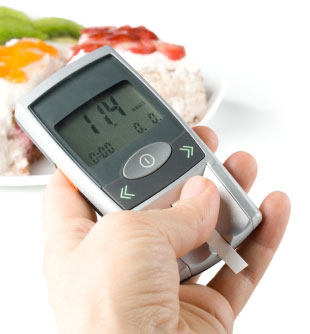If you’ve ever experienced the racing heartbeat, cold sweat, and shaky hands that can accompany low blood sugar (also called hypoglycemia), you know it’s a scary feeling that you’ll do just about anything to avoid in the future. And although low blood sugar is more common in people with diabetes, many people who do not have the disease also experience the frightening symptoms from time to time. In fact, there are two types of hypoglycemia that can occur in people without diabetes: fasting hypoglycemia, which may happen when you’ve gone without food for a long period of time, and reactive hypoglycemia, when the unpleasant symptoms occur about 1–3 hours after eating.

Avoiding Low Blood Sugar: 4 Tips to Try
- Stop skipping meals. Darting out the door before you can grab breakfast or working through lunch may seem harmless enough, but doing so can leave your body operating on empty, setting you up for your blood sugar to bottom out. Even quick meals, like a handful of nuts and an orange or cheese toast can give your blood a boost.
- Spread meals and snacks throughout the day. Not only should you avoid skipping meals, but it’s a good idea to not allow more than about 2.5–3 hours go by between eating times. For the best assurance of keeping your blood sugar under control, make sure your meals and snacks contain protein, fat, and carbohydrate. Complex carbohydrates (especially high-fiber sources), protein, and fat work together to gradually create a rise and stabilization in blood sugar. For example, a whole grain slice of toast with peanut butter and an apple for breakfast, and a handful of whole wheat crackers with a spread of hummus for a snack will keep your blood sugar from dipping during the morning. Having a doughnut and orange juice (high in sugars, low in protein and fiber) for breakfast and following it up with no mid-morning snack can send your blood sugar crashing long before lunch.
- Limit high-sugar foods. Foods that are high in simple sugars like pastries, candy, soda – and even fruit juice – can send your blood sugar levels skyrocketing, then crashing down, bringing on symptoms of hypoglycemia. Try to avoid these foods, and if you do plan to indulge in something sugar, make sure you’re not doing so on an empty stomach, which can make it more likely that your blood sugar will dip.
- Get plenty of regular exercise. Besides being a real boon to your waistline and your heart, regular, moderate exercise can help you get a handle on your blood sugar. In fact, many studies demonstrate that regular exercise can help improve your control over blood sugar and decrease insulin resistance, a condition that can lead to diabetes over time. Although having hypoglycemia is not a guarantee that you will develop diabetes later in life, it does demonstrate a sensitivity to carbohydrates, which may mean that you could face diabetes if you don’t take control over your blood sugar now.
The Bottom Line
If you’re sensitive to the way carbohydrates react with your system, these 4 tips can help you gain more control. And, of course, if you continue to experience the symptoms of low blood sugar, it’s a good idea to make an appointment to discuss them with your doctor.
Alumni: University of Tennessee, Knoxville – Beth Sumrell Ehrensberger is a Registered Dietitian and holds a Master Degree in Public Health. An experienced nutrition counselor, writer and public speaker, Beth specializes in translating complex nutrition information into practical concepts. Beth was awarded a Nutrition Communications Fellowship to the National Cancer Institute, and has worked on the internationally recognized Nutrition Action Healthletter of the Center for Science in the Public Interest.


